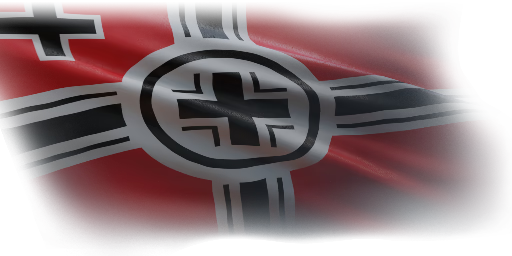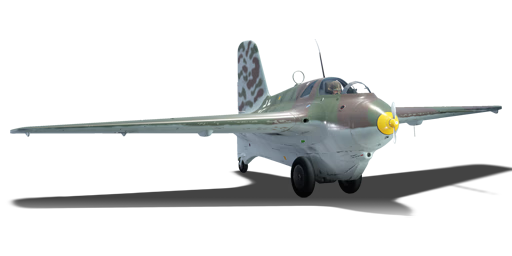



The Me 163 B is a German jet fighter. It has been in the game since the start of the Open Beta Test prior to Update 1.27.
Even at BR 8.0, few jets can out run, out climb, or out turn the Komet, and even fewer can do all three at the same time. Even the highest BR jets cannot threaten this tiny terror lightly, lest it feasts on their blood! Although hard to catch, it is not hard to kill. The very short 6-minute fuel supply is its Achilles heel: if possible, just avoid the Komet until its fuel is spent for an easier kill. Still, any disciplined Komet jockey can overcome its shortcomings, rocketing high above the map, cut throttle, and easily glide at a mind-blowing 400 km/h to action. Stay above 5,000 m for its best performance, unless all targets are lower, and perform vertical manoeuvres to preserve precious energy. The craft is very sturdy and only the most extreme manoeuvres can break the wings so push it. Conversely don't chase top jets, get altitude, let them come to you (they will). High closing speeds require maxed out crews Keen Vision and G-Tolerance and majority of Awareness, and of course Expert qualification.
There are two characteristics that make the Me 163 what it is in War Thunder. The first is its powerful rocket engine, the second is its low fuel supply. The latter means that the Komet must rush into the battlefield quickly before its fuel supply falls low and it needs to land at an airbase. Its huge thrust-to-weight ratio guarantees however that the Komet will be able to engage the enemy very early on in a match. Whenever the enemy team is climbing or gaining speed at sea level, the experienced Me 163 pilot will always find some unsuspecting prey. Remember, when engaging an enemy, turning off the rocket engine is the wisest choice, as to operate on safe speeds and to conserve fuel.
The Me 163 B-1 is a fun to play aircraft that provides a very different play style. For that reason, it always succeeds in seducing players. It may be frustrating at times, but its particularity will always make it a plane worth flying.
flaps
flaps
flaps
brake
| Belt | Belt filling | Armor penetration (mm) at a distance: | |||||
|---|---|---|---|---|---|---|---|
| 10 m | 100 m | 500 m | 1000 m | 1500 m | 2000 m | ||
| HEI-T/I | 6 | 6 | 6 | 6 | 6 | 6 | |
| HEI-T/HEI-T/HEI-T/HEF-I | 4 | 4 | 4 | 4 | 4 | 4 | |
| HEI-T/HEI-T/HEI-T | 4 | 4 | 4 | 4 | 4 | 4 | |
| HEI | 4 | 4 | 4 | 4 | 4 | 4 | |












Flight performance |
|---|
Survivability |
|---|
Weaponry |
|---|